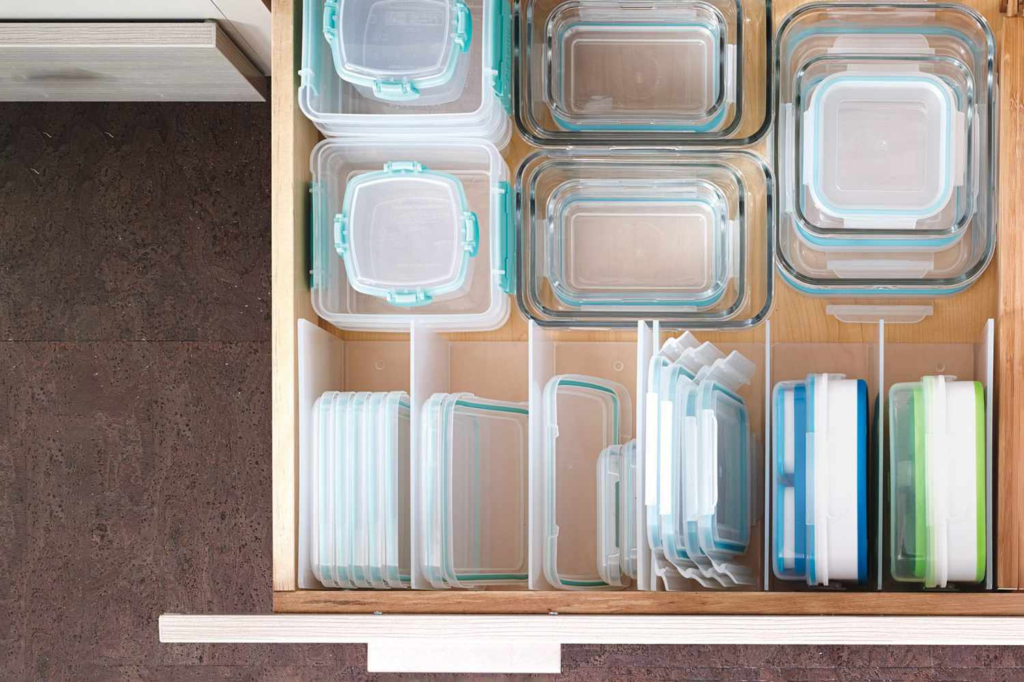Remember the classic, ubiquitous plastic container with the vaguely orange lid that every relative seemed to own? While it served its purpose, the world of food storage has undergone a revolution. Today, it’s not just about hiding leftovers in the fridge; it’s about preserving freshness, reducing waste, streamlining meal prep, and making our kitchens more efficient and sustainable.
Whether you’re a meal-prepping pro, a leftover lover, or just someone trying to keep your groceries fresh, the right containers are a kitchen game-changer. Here’s what people are really looking for in modern food storage solutions.
1. The Material Matters: Plastic, Glass, Silicone, and Beyond
Gone are the days of one-size-fits-all plastic. Now, the choice of material is the most critical decision, balancing durability, health, and environmental impact.
Glass: The current crowd favorite for a reason. Glass containers (like those from Pyrex, OXO, or IKEA) are non-porous, meaning they won’t absorb stains or odors from tomato sauce or curry. They are perfectly microwave-safe without concerns about leaching chemicals, and they can go straight from the fridge to the oven. The downside? They are heavier and can break if dropped.
Silicone: Flexible, collapsible, and incredibly versatile. Silicone bags (a popular alternative to plastic zip-top bags) and containers are lightweight, airtight, freezer-safe, and easy to clean. They are perfect for snacks, sous-vide cooking, and saving space in crowded cupboards.
Stainless Steel: A durable and non-toxic option, especially for packed lunches. They’re lightweight, virtually indestructible, and great for cold foods. However, they are not microwaveable and often not see-through, which can be a drawback for some.
Plastic (The Modern Kind): Not all plastic is created equal. Look for containers that are BPA-Free and preferably made from safer materials like Tritan. They are lightweight and shatterproof, making them ideal for kids’ lunches or picnics. The key is to ensure they are high-quality and won’t warp or stain over time.

2. The Seal is the Real Deal
What good is a container if it doesn’t close properly? A leakproof, airtight seal is non-negotiable. It locks in freshness, prevents spills in your lunch bag, and keeps freezer burn at bay.
Look for: Containers with locking lids, often featuring a four-clip system or a secure silicone gasket. A good test is to press the center of the lid once it’s sealed; if it pops back up, there’s likely no gasket. If it stays down, you’ve found a winner.
3. Shape and Stackability: The Art of Kitchen Tetris
A jumble of mismatched containers with missing lids is a universal kitchen nightmare. The modern solution? Uniformity.
Rectangular and square containers are far more space-efficient than round ones, both in your fridge and in your cupboard. Choosing a brand that offers a modular system—where all lids are interchangeable or all containers nest and stack neatly—is a life-changing upgrade. It saves space, reduces clutter, and makes finding the right lid a task of the past.
4. Multi-Functional & Smart Features
Today’s containers do more than just store.
Compartmentalized Containers: Perfect for adult lunch boxes or kids’ meals, keeping different foods separate.
Freezer-to-Oven/Microwave Safe: The ultimate convenience. Being able to thaw, reheat, and even bake in the same dish minimizes cleanup.
Venting Lids: Some containers feature steam vents for microwave reheating, helping to keep food from getting soggy.
Smart Labels: While not high-tech, built-in dry-erase surfaces or smart label tags help you track what’s inside and when you stored it, combating the mystery “science experiment” container in the back of the fridge.
5. The Sustainability Factor
With a growing awareness of single-use plastic waste, reusable containers are an eco-friendly choice in themselves. People are increasingly drawn to brands that prioritize:
Durability: Products built to last for years, not months.
Recyclable Materials: Like glass and certain plastics.
Closed-Loop Systems: Some companies offer recycling programs for their products at end-of-life.
Putting It All Together: How to Choose
Your ideal container depends on your lifestyle:
The Meal Prepper: Opt for a large set of uniform, stackable, glass containers with airtight lids. You’ll be reheating often, and glass handles the heat best.
The Family Lunch Packer: A mix of sturdy plastic (for kids) and stainless steel is great. Include smaller containers for dips and snacks and consider compartmentalized boxes.
The Space-Saver: Silicone bags and collapsible containers are your best friend. They dramatically reduce storage volume when not in use.
The Eco-Conscious Consumer: Focus on glass or stainless steel for their longevity and recyclability. Supplement with high-quality silicone bags to replace plastic wrap and zip-top bags.
Investing in a system of food storage containers you love might seem like a small thing, but it pays daily dividends. It reduces food waste, saves money, simplifies your routine, and brings a little more order to the beautiful chaos of the kitchen. Ditch the mismatched clutter and find the set that works for you

